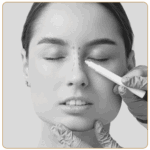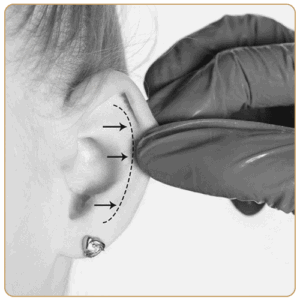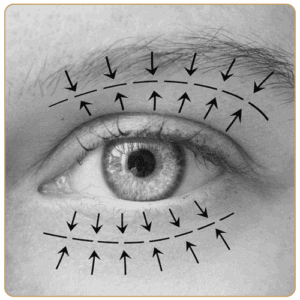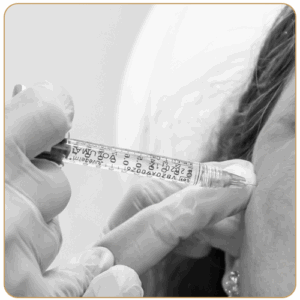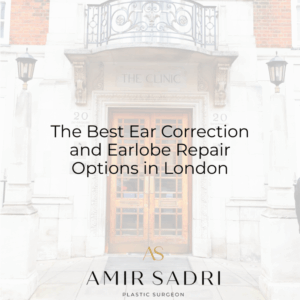Cosmetic plastic surgery
Cosmetic plastic surgery of the eyelids can be an immensely powerful way of improving facial aesthetics and creating a rejuvenated and more youthful appearance to the face. However, who benefits from blepharoplasty?
Blepharoplasty
Blepharoplasty can involve either the upper or lower eyelids. We will discuss each in turn and how surgery can help.
Upper blepharoplasty primarily addresses excess upper eyelid skin. The medical term for this is dermatochalasis. When this occurs, it can create a tired look and in extreme cases interfere with vision. Dermatochalasis can occur in conjunction with brow ptosis. Brow ptosis is when the tissues of the forehead progressively descend to lower level as we age. It is important that both dermatochalasis and brow ptosis are considered when having blepharoplasty.
Lower blepharoplasty is performed for “eyebags” or hollowing in the “tear trough”. “Eyebags” are broadly speaking due to fat within the eye-socket itself bulging out through a weakened orbital septum. In youth the orbital septum is firm and tight and contains the fat in the eye-socket. However, as we age the orbital septum become weak and thin allowing the fat to show more. In such circumstances it is important not to remove fat, but to reposition the fat to create a smoother contour. It is very rarely necessary to remove lower eyelid skin. In fact, excess skin removal can have negative effects.
In patients who have a prominent “tear trough” this is due to a lack of fat. Fat replacement with fat grafting is very helpful in this situation.
Fine lines and wrinkles on the lower eyelids are best treated with a CO2 laser to resurface the skin. Removal of skin should be extremely minimal and almost never done.


